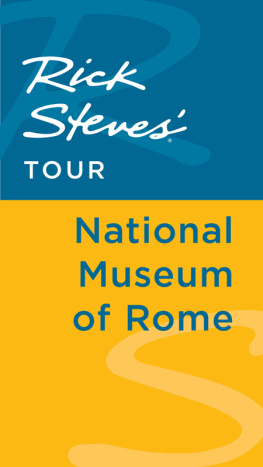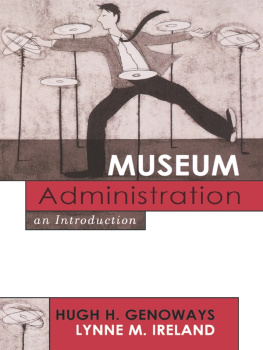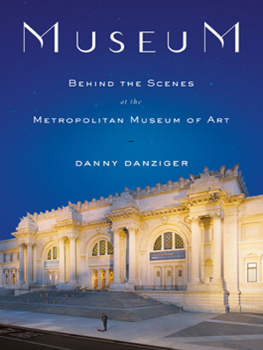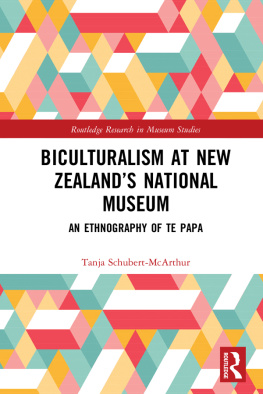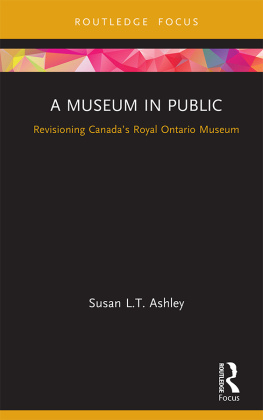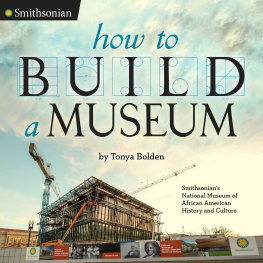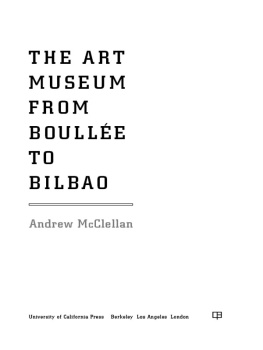Museum Trouble
Museum Trouble
Edwardian Fiction and the Emergence of Modernism
Ruth Hoberman

University of Virginia Press
2011 by the Rector and Visitors of the University of Virginia
All rights reserved
Printed in the United States of America on acid-free paper
First published 2011
9 8 7 6 5 4 3 2 1
Library of Congress Cataloging-in-Publication Data
Hoberman, Ruth.
Museum trouble : Edwardian fiction and the emergence of modernism / Ruth Hoberman.
p. cm.
Includes bibliographical references and index.
ISBN 978-0-8139-3126-5 (cloth : alk. paper) ISBN 978-0-8139-3136-4 (ebk.)
1. English fiction20th centuryHistory and criticism. 2. English fiction19th centuryHistory and criticism. 3. Museums in literature. 4. MuseumsSocial aspectsGreat BritainHistory. 5. Modernism (Literature)Great Britain. I. Title.
PR888.M85H63 2011
823.91209355dc22
2011004064
Contents
Illustrations
Acknowledgments
There is no document of Civilization that is not at the same time a document of barbarism. Walter Benjamins famous pronouncement is obviously true of museums. But it is also true, on a much smaller scale, of the process of writing a book. I am grateful to the many people who put up with my endless demands during the writing of this book: for books, money, time, advice.
First, for their help in locating massive numbers of books and articles, I am grateful to the Interlibrary Loan staff at Eastern Illinois Universitys Booth Library: Bradley Tolpannen, Sue Yocum, Jana Lawson, and Larry Auchstetter. Karen L. Whisler, Head of Collection Management Services, helped me in my efforts to track down arcane information and steadfastly advocated for faculty in the acquisition of new research tools. Thanks also to Andrea Johnston, graduate assistant extraordinaire, for the many hours she spent taking notes for me in the University of Illinois library. For help locating and gaining access to archival material in the United Kingdom, I am grateful to Gary Thorn and Bryony Leventhall of the British Museum Archives.
Eastern Illinois University has provided me with time, money, and a stimulating collection of colleagues and students, all of which made this work possible. I am grateful to Easterns Council on Faculty Research for funding travel and summer research, and to the College of Arts and Humanities for two Travel Awards and two awards of reassigned time for research. Eastern also facilitated my writing through its study abroad program, which allowed me to live at Harlaxton College, the British campus of the University of Evansville, for two semesters while working on this book. Under the directorship of Jan Beckett, the library offered a warm (literally, which is important in a nineteenth-century manor house) and supportive working environment.
The earliest stages of this book grew out of a National Endowment for the Humanities summer seminar directed by Martha Vicinus at the University of Michigan. That very thought-provoking seminar introduced me to the pleasures of archival research, and my seminar project, on fin de sicle Egyptology, triggered my interest in the turn-of-the-century museum. More recently, my Tuesday morning research groupDagni Bredesen, Terri Fredrick, Christopher Hanlon, Jeannie Ludlow, Robin Murray, and Angela Viettohas kept me focused, caffeinated, and laughing. To friends who read and responded to chaptersSusan Bazargan, Fern Kory, Janet Marquardt, David Raybin, Dana Ringuette, and Angela ViettoI cannot begin to express my thanks. Anonymous readers for Feminist Studies and the University of Virginia Press provided helpful suggestions. I am grateful also to Cathie Brettschneider, Humanities Editor at the University of Virginia Press, for her support of this project, and to Colleen Romick Clark for her careful copyediting.
For help obtaining images, I would like to thank Dennis Sears of the University of Illinois Rare Book Room, Beverly Cruse of Eastern Illinoiss Media Services, and Christopher Hanlon, whose computer expertise and good advice have been equally invaluable over the years. For help with administrative paperwork as well as her good humor in dealing with a department full of needy professors, I am grateful to Jean Toothman.
Feminist Studies, the University of Toronto Press, and Victorian Literature and Culture generously granted permission to reprint material that appeared in their pages. Portions of chapters 5 and 6 appeared in Feminist Studies as Women in the British Museum Reading Room during the Late-Nineteenth and Early-Twentieth Centuries: From Quasi to Counterpublic (28 [Fall 2002]: 489512; 2002 by Feminist Studies, Inc., reprinted with permission of the publisher) and as A Thought in the Huge Bald Forehead: Depictions of Women in the British Museum Reading Room, 18571929 in Reading Women, edited by Janet Badia and Jennifer Phegley ( 2005 University of Toronto Press, reprinted with permission of the publisher). Part of the National Portrait Gallery Warding and Security Staff Records, Duty Reports, 18951921 (ref. no.: NPG82/2/2, NPG Archive), and to the following organizations for permission to reproduce images: the Trustees of the British Museum; the M. C. Escher CompanyHolland; National Museums Liverpool; the Rare Book and Manuscript Library, University of Illinois at UrbanaChampaign; the National Gallery, London; Artists Rights Society; the Tate Museum; and the Victoria and Albert Museum.
Finally, my thanks to Richard Sylvia, who has read, with infinite patience, every word I have written for the past twenty-four years, and to our daughter, Madeline. Despite my abiding and perhaps obsessive love for the written word, I find it inadequate to express my gratitude for their love and support.
Museum Trouble
Introduction
On Wednesday, February 24, 1909, a man and a woman were seen in excited conversation in the Arctic Room of the National Portrait Gallery, apparently arguing over the quality of a painting. Then the man, according to the account in the Times, drew a revolver from his pocket and, placing the muzzle close to the womans head, fired. She fell to the floor and the man, after but a moments hesitation, turned the revolver upon himself. He died instantly; she, a few hours later. Two young women who witnessed the scene rushed terrified from the room to summon help.
John Tempest Dawson, it emerged, was a seventy-year-old of means suffering from paranoia. The woman he killed was his wife. But why did he choose to commit the murder at two in the afternoon in the National Portrait Gallery, in a room he had deliberately selected, according to a letter in his pocket?
I begin with this incident for a number of reasons. First, the very existence of the National Portrait Gallery was part of a late nineteenth-century phenomenon: the multiplication and expansion of public museums and galleries as a means of constructing and consolidating national identity. Established in 1856, the National Portrait Gallery opened to the public in 1859, and, after several moves around London, arrived at its present location, on Trafalgar Square next to the National Gallery, in 1896. In the public mind, this move reinforced the Portrait Gallerys connection with the state, since Trafalgar Square not only contained the National Gallery and a statue of Nelson, but also had traditionally served as a recruiting and parade ground for the troops stationed in the barracks behind the gallery. The square was, according to E. V. Lucas, a genuinely national attempt at a grandiose effect.museum officials outraged response suggests the extent to which the museum was seen as a disembodied space, where the bodies of visitors were supposed to be so well regulated as to be invisible. Finally, and most important for my purposes, the incident suggests that despite the pressures of rules and decorum, despite the self-regulation enforced by their visibility within a public space, actual museumgoers experienced the museum in complex and unpredictable ways.
Next page

